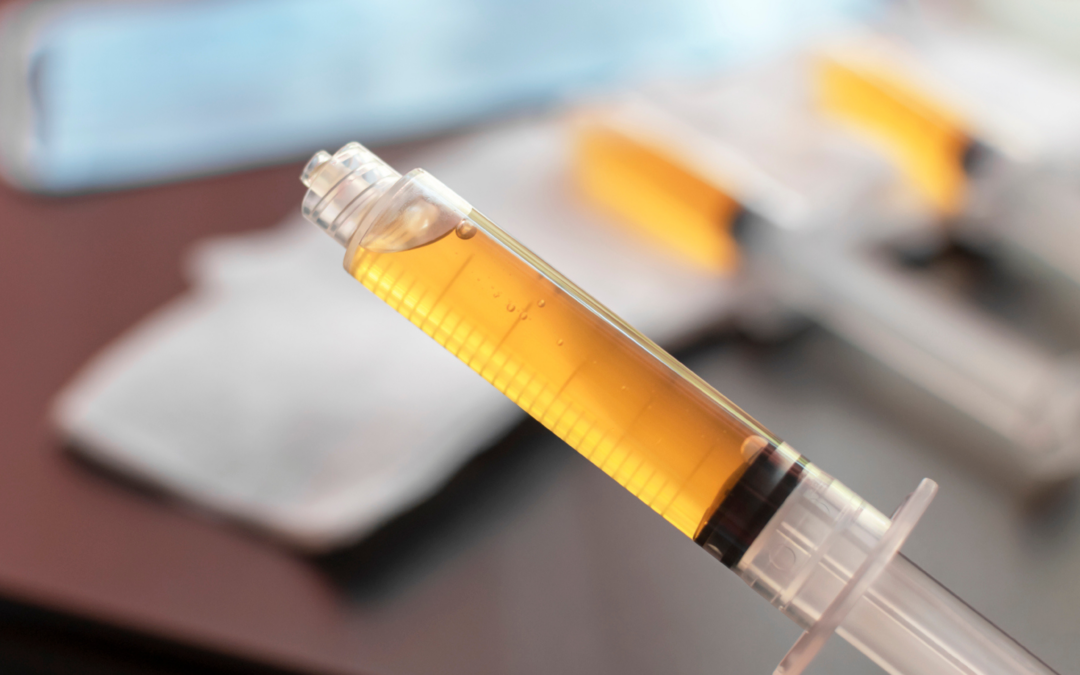Platelet-rich plasma (PRP) can be an effective treatment for osteoarthritis in the shoulder, knee, hip, or thumb. But when it comes to the use of platelet-rich plasma therapy to treat joint pain, one size does not fit all. To reach its maximum benefit, PRP should be customized to the specific joint or tissue being treated.
How PRP Works for Joint Pain
Platelet rich plasma is an FDA compliant treatment where a small amount of the patient’s own blood is drawn and then spun in a centrifuge to isolate and concentrate the platelets from the blood sample. The concentrated platelets release numerous growth factors that help to reduce inflammation and stimulate healing and repair of injured cartilage and tissues. Experienced regenerative medicine specialists know how to determine the correct formulation needed and then use ultrasound or fluoroscopic (X-ray) guidance to deliver this customized platelet rich plasma concentration directly to the joint in need of treatment. Sometimes the tendons and ligaments around the joint need to be treated as well.
Key Factors that Impact Platelet Rich Plasma Therapy
We’ve already stated that PRP needs to be customized to the specific joint being treated, but there are other factors that also play a role in successful treatment. These include:
- Diet: Because the platelets are drawn from the patient’s own body, their quality can be highly influenced by the patient’s diet. A folate-rich diet or a diet rich in berries, such as blueberries, may help boost platelet count in a patient’s blood.
- Medications: Patients may be advised to stop taking aspirin, nonsteroidal anti-inflammatory medication (Advil, Aleve, etc.), blood thinners or other medications that interfere with platelet function.
- Targeted Delivery: Some practices simply inject PRP into the joint without using any image guidance. This is quite literally “stabbing in the dark.” The best results occur when the treatment is delivered specifically to the damaged area using image guidance.
- Technology: Many practices offering PRP do not have the highly specialized equipment necessary to process the patient’s blood so they can receive the highest levels of growth factors and proteins that promote tissue repair.
- The extent of the damage or injury: All patients require a thorough history, physical exam, and imaging studies to determine if their joint is appropriate for PRP treatment. Occasionally, damage to the joint in question may be too advanced for PRP to be considered a viable treatment option.
How Effective is Platelet Rich Plasma Therapy?
Platelet-rich plasma (PRP) has been practiced for years, having been one of the first biologic therapies used to treat orthopedic conditions. It is both art and science: art in the skill and expertise of knowing exactly where to deliver the treatment; and science in knowing how to formulate a specifically customized concentration of PRP to achieve maximum benefit.
When administered correctly under the right protocols, most patients gain relief within four to six weeks following PRP therapy and do not require any additional care.
And since the procedure is performed on an outpatient basis, there is no need for hospitalization or lengthy rehab. Nothing more than ice and rest are needed to minimize discomfort as the body begins to heal itself immediately after the injection, and patients are often able to resume normal activities within days. Physical therapy may also be recommended to regain joint mobility and strength.
Fill out the form below to learn more about PRP Therapy for Joint Pain at SDOMG.
